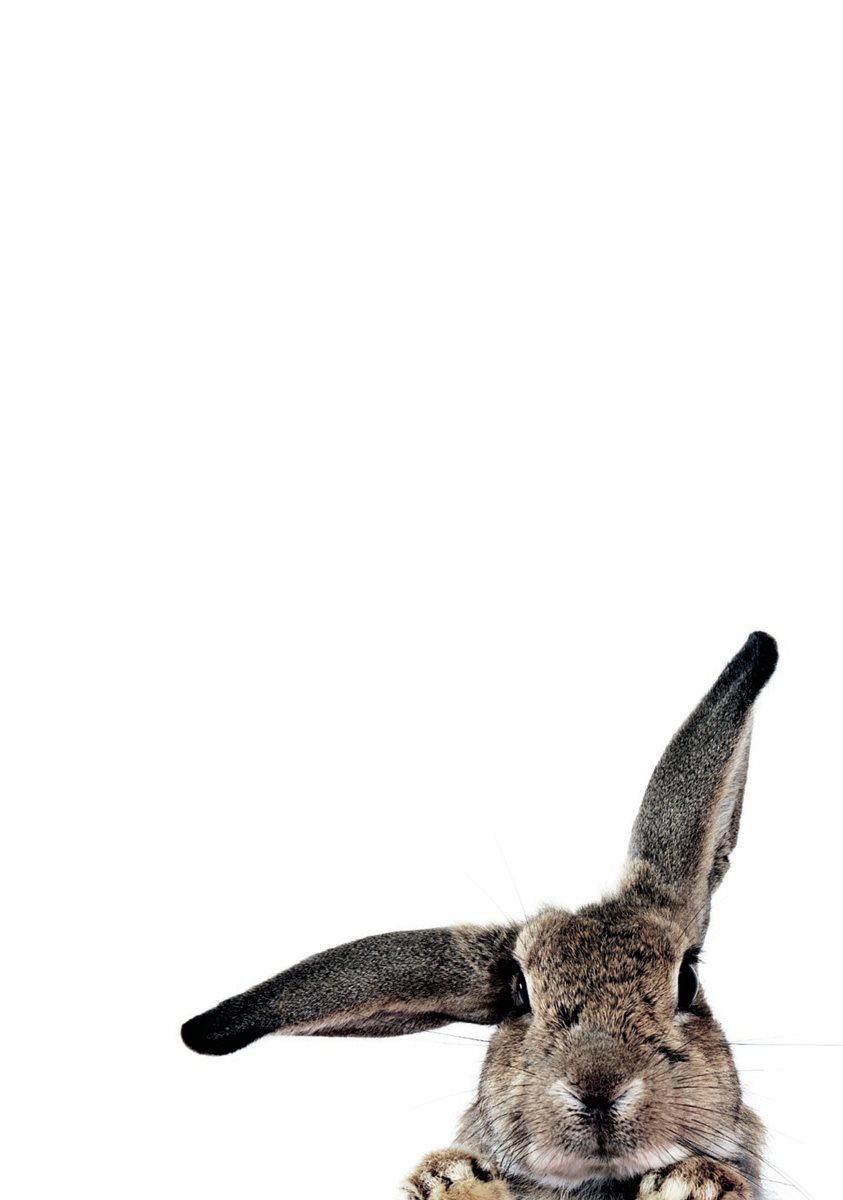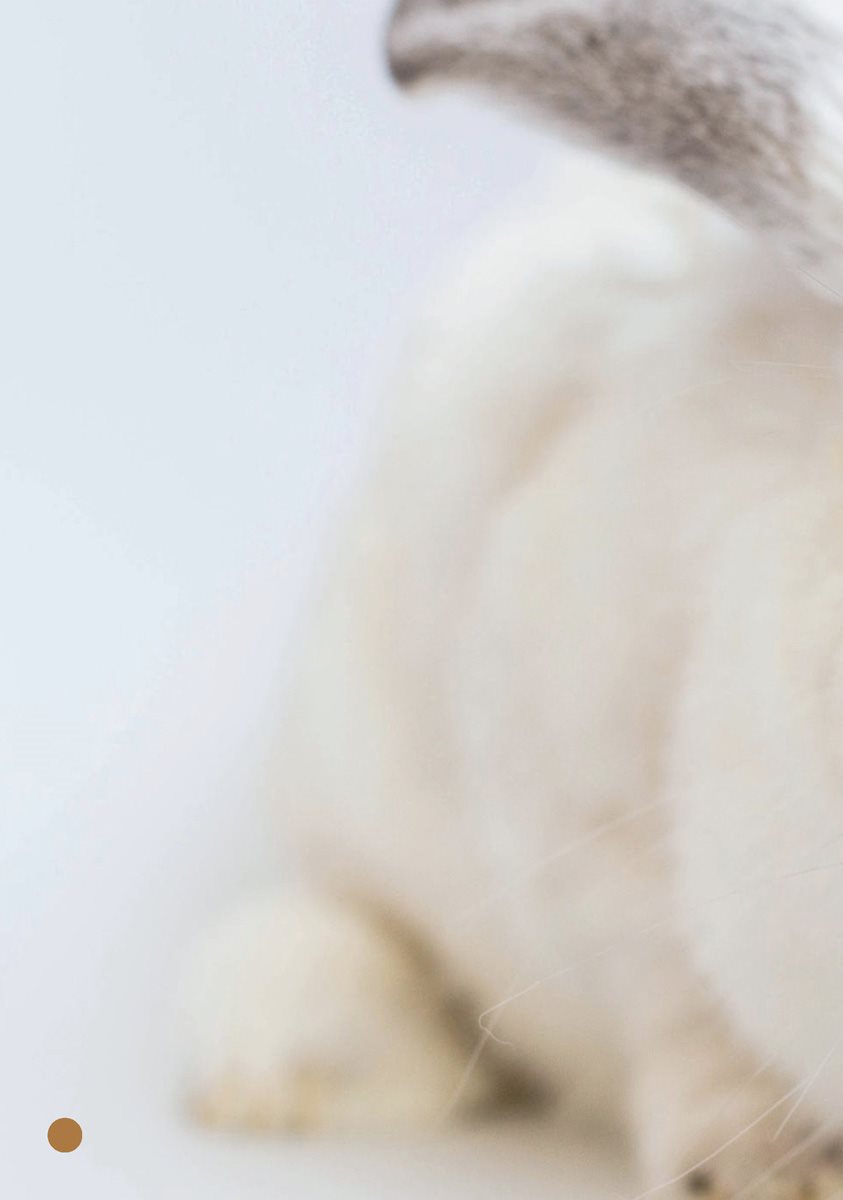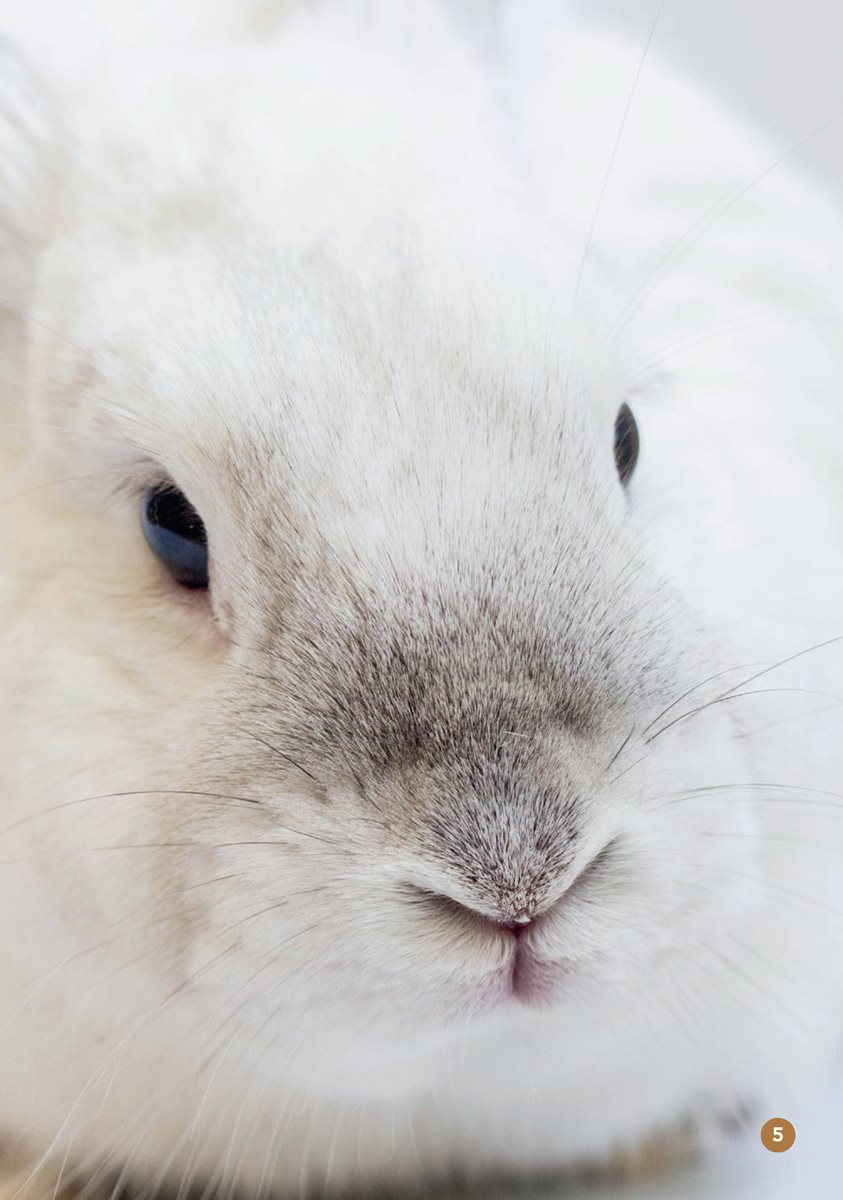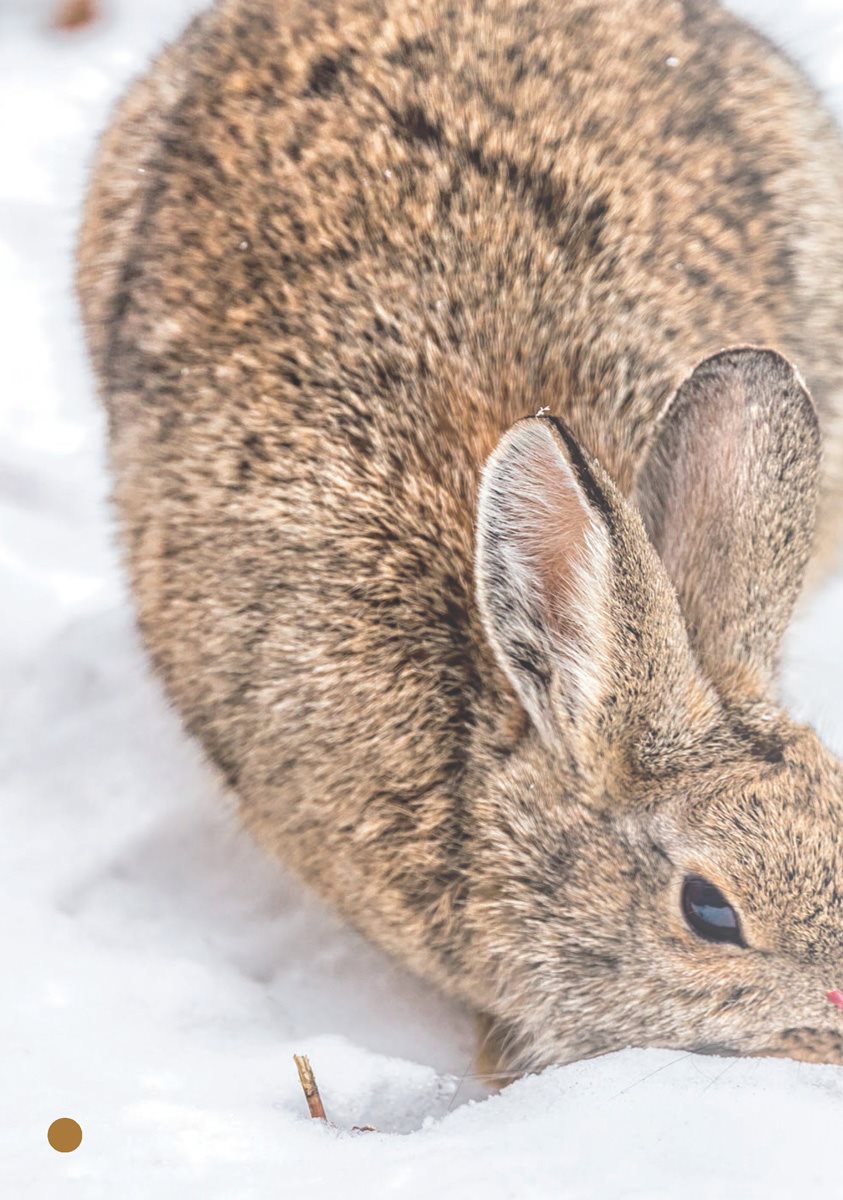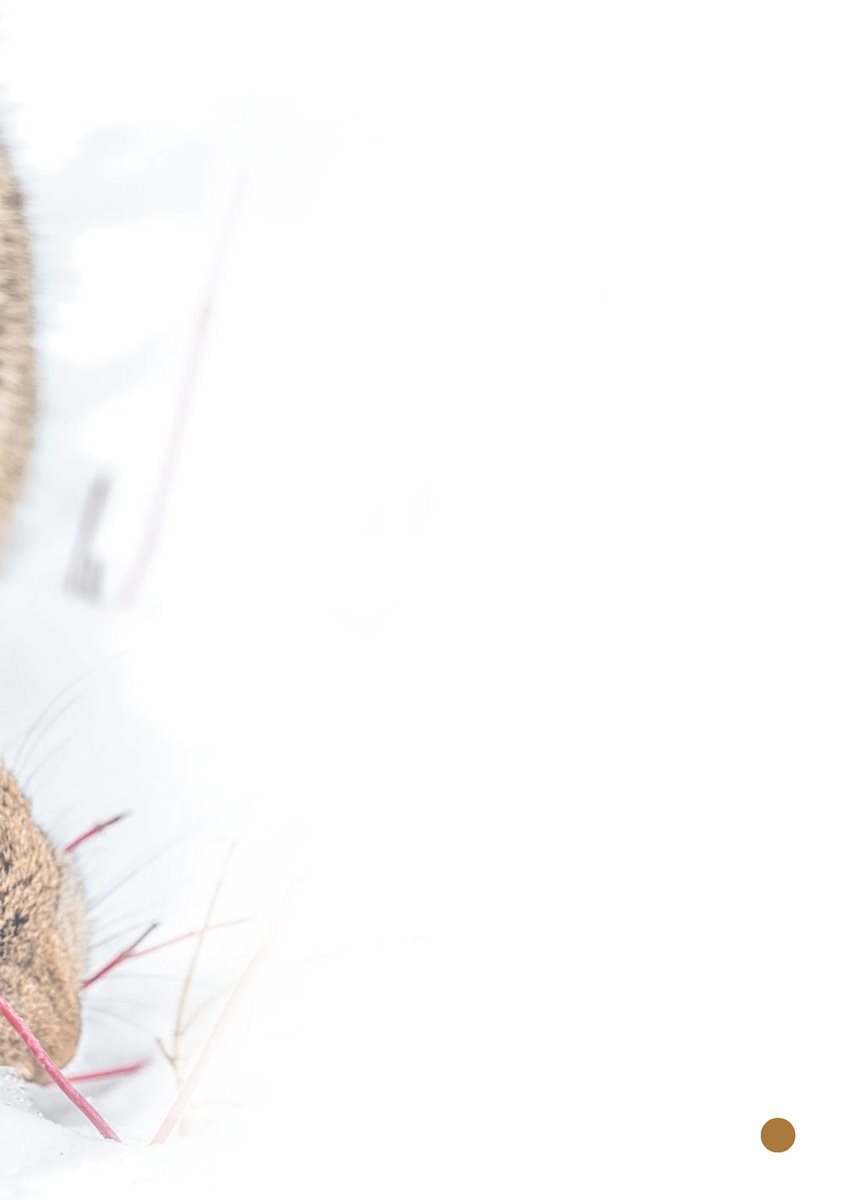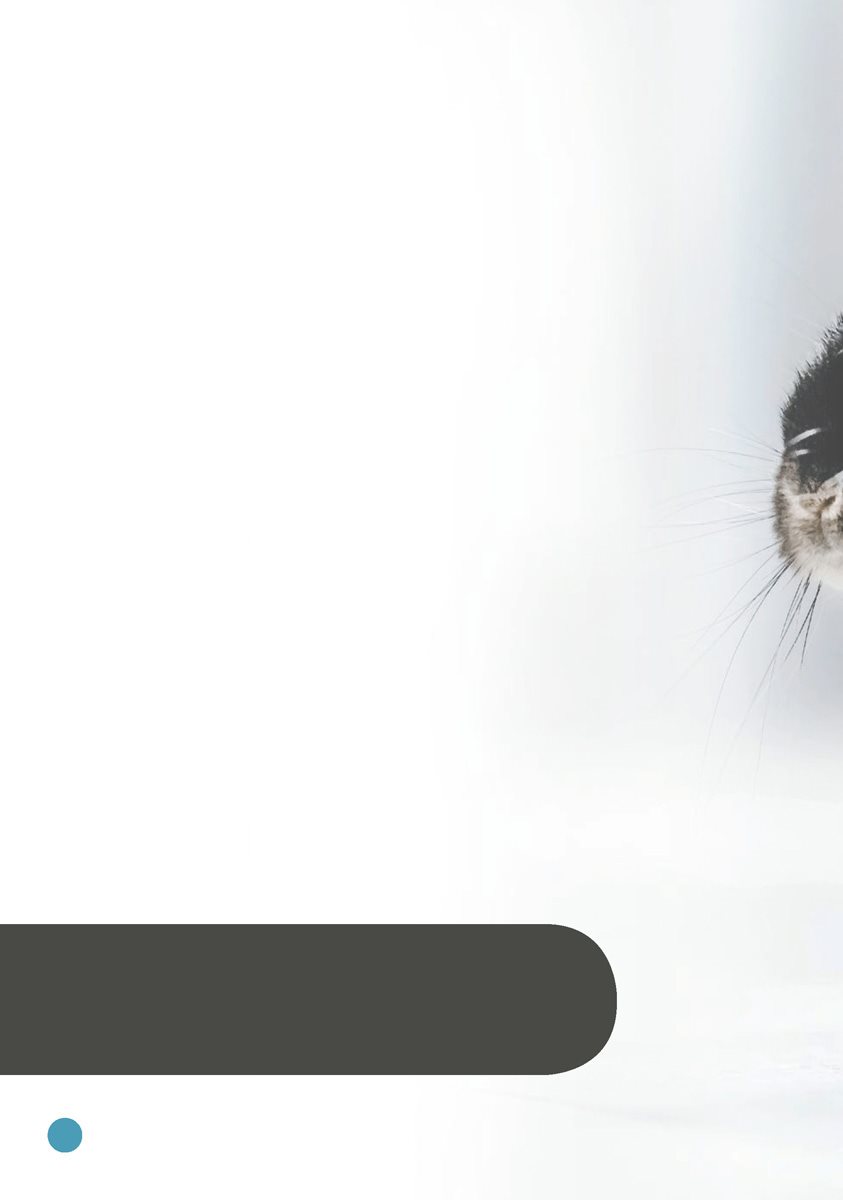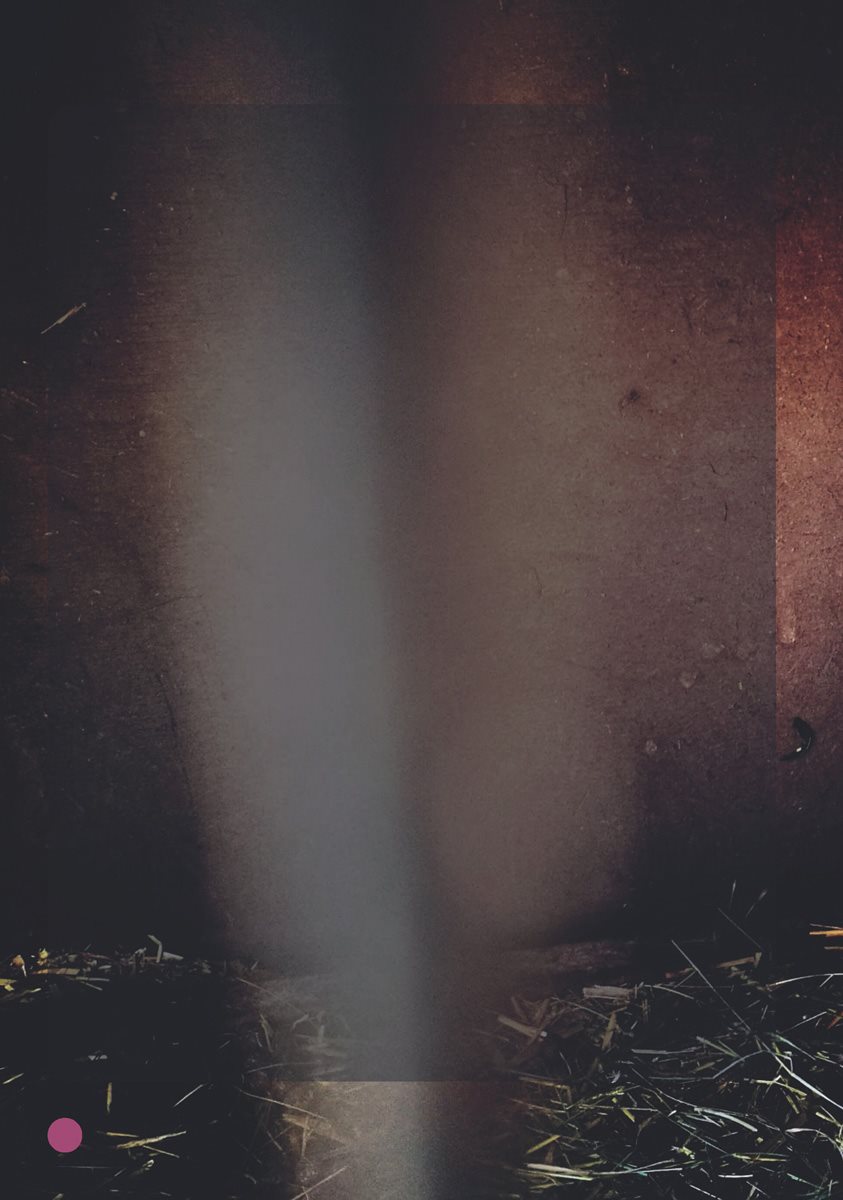2001 SW 31st Avenue
Hallandale, FL 33009
www.mitchelllane.com
Copyright 2019 by Mitchell Lane Publishers. All rights
reserved. No part of this book may be reproduced without
written permission from the publisher. Printed and bound
in the United States of America.
First Edition, 2019.
Author: John Bankston
Designer: Ed Morgan
Editor: Sharon F. Doorasamy
Names/credits:
Title: Caring for My New Rabbit / by John Bankston
Description: Hallandale, FL : Mitchell Lane Publishers, [2019]
Series: How to Care for Your New Pet
Library bound ISBN: 9781680203301
eBook ISBN: 978-1-5457-4507-6
Photo credits: Design elements and photos, Getty Images and
Freepik.com, cover image Mark Taylor/Nature Picture Library/Getty,
back cover freepik.com, p. 3 Steve Hoskins/Getty Images, p. 4-5
Gustavo Zambelli on Unsplash, p. 67 Andrea Reiman on Unsplash,
p. 89 Eric Ward on Unsplash, p. 1415 FASTILY CC-BY-SA-3.0,
2.5, 2.0, 1.0, p. 1617 Lauri Rantala CC-BY-2.0, p. 1819 Francis
Delapena on Unsplash, p. 2021 Olga1969 CC-BY-4.0, p. 2223 Maxi
on Unsplash, p. 2425, 26 freepik.com, p. 29 Gabriel Gurrola on
Unsplash
Contents
Words in bold
throughout can be
found in the Glossary.
Becoming a Pet
Say, Bunny, bunny. If those are your first words
today, you might be lucky. Rabbits could bring
good luck. But pet rabbits are already lucky.
Rabbits didnt used to be pets. They were food.
Rabbits have been domesticated for more than
1,500 years. Monks raised rabbits for meat and fur.
Five hundred years ago, people began keeping
them as pets. In the 1900s, creating new breeds
became popular.
Some people still eat rabbit meat or wear their
fur. In the United States, rabbits are usually pets.
They can be kept indoors like a dog. They can use
a litter box like a cat.
Having a pet rabbit isnt easy. They take up more
space than gerbils. They need more time than
goldfish. Still, people with pet rabbits say its
worth it. Because bunnies can be cute, sweet, and
even smart. Plus, they will be playful as you get
ready in the morning. They will be filled with
energy as the sun sets.
Rabbit Tales
Rabbits are everywhere. They live in nearly every
country in the world. Thats because rabbits are
awesome at one thingmaking more rabbits!
Until 1912, they were considered rodents. Rodents
include hamsters, gerbils, and beavers. Like them, a
rabbits teeth are always growing. Still, their teeth are
different. So is their diet and how they digest food.
Even in cities, you can see wild rabbits. Cottontails
are common. So are the rabbits cousin, the hare.
Believe it or not, the North American jackrabbit is
really a hare.
There are more than 60 breeds of domesticated
rabbits in Europe and North America. Unlike their
wild cousins, they are all related to the European
rabbit. They have long ears and short, fluffy tails.
They are also great jumpers.
Domestic breeds include the Californian, Dutch, and
Netherland Dwarf. There are rabbits barely bigger
than your hand. Others are the size of a small dog.
The Giant Chinchilla can weigh more than 16 pounds.
The English Lops ears can grow to more than two
feet long.
It doesnt matter what rabbit you choose. Before you
bring it home, you must get ready. The first step?
Bunny proofing!
Bunny Proof
Everything changes with a baby. Do you have a little
brother or sister? Have you visited a home with a small
child? Parents baby proof before baby arrives. Before
getting a rabbit, you have to bunny proof.
Rabbits chew. Hopping around your home, they might
chew on the couch. They might eat a poisonous
houseplant. They even chew walls.
The worst thing a rabbit can chew are electrical cords.
Keep your new rabbit safe. You shouldnt let your rabbit
hop all over the house. Keeping it in one area is a good
idea. Still, if it gets out of its cage or pen, you should be
prepared.
Take an adult and walk around the house. Are there
plants at bunny height? Move them to a higher space.
Have the adult help cover the electrical cords. You can
buy plastic tubes for this. You will also want to cover
unused electrical outlets.
While touring the house, decide where to put your
rabbits home. Maybe youll choose a corner of your
room. Or you might use a guest room. Garages and
basements arent safe for rabbits. Once you choose its
space, youll want to get its home ready.
Did You Know?
After thousands of people protested, a major
grocery chain stopped selling rabbit meat.
Raising a House Rabbit
Rabbits need more space than gerbils or hamsters. Wild
rabbits play on acres of land. Pet rabbits also used to
stay outside. Outdoor hutches arent very safe. Animals
such as foxes and coyotes are predators . They often
attack rabbits. Inside a hutch, rabbits face hot days and
cold nights.
Today, more and more bunnies are house rabbits. It isnt
just about keeping them warm and safe. They are social .
They want to be near you.
Start by setting up your rabbits cage or crate. This is
where it will sleep. It is also where it will spend the first
couple of days when it arrives. Crates are plastic homes
often used by dogs. Many rabbits are also crate trained.





